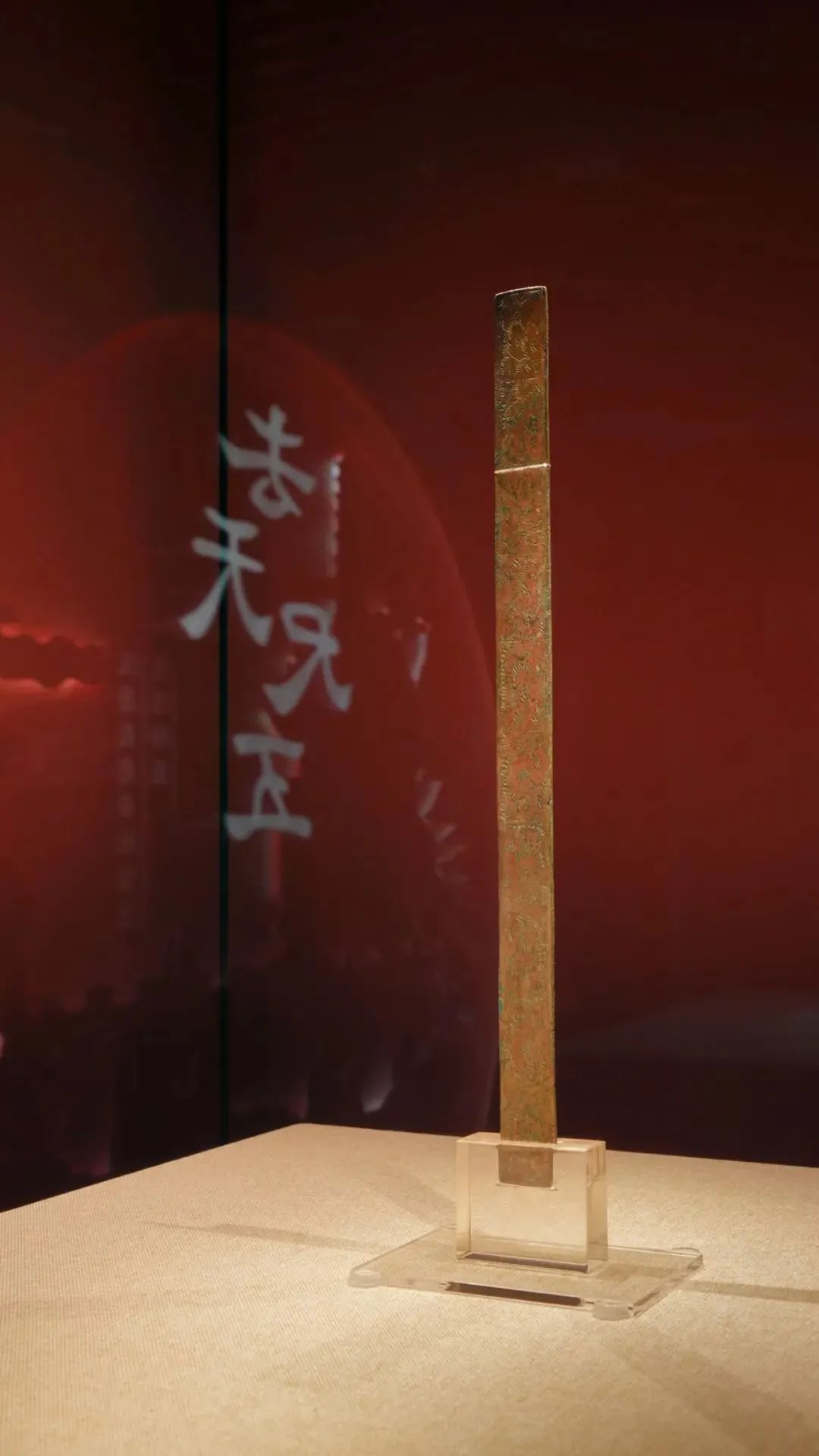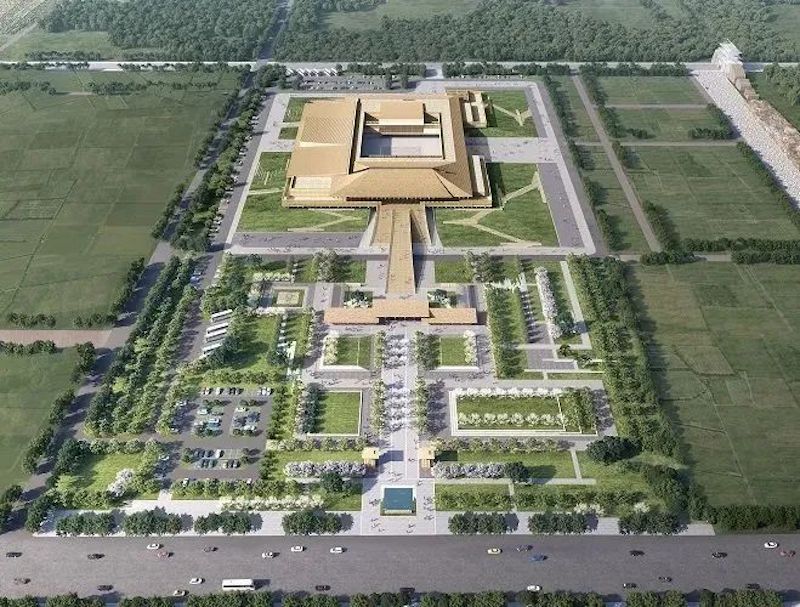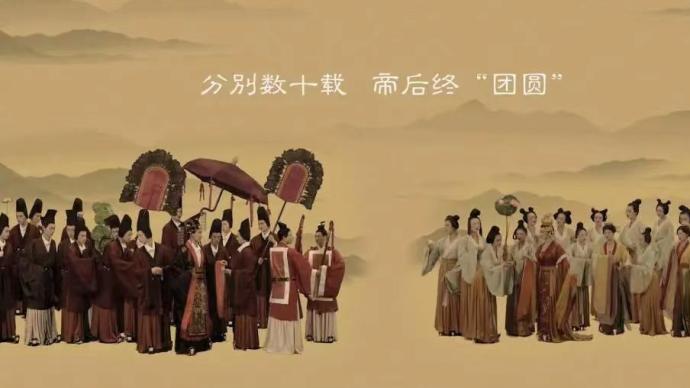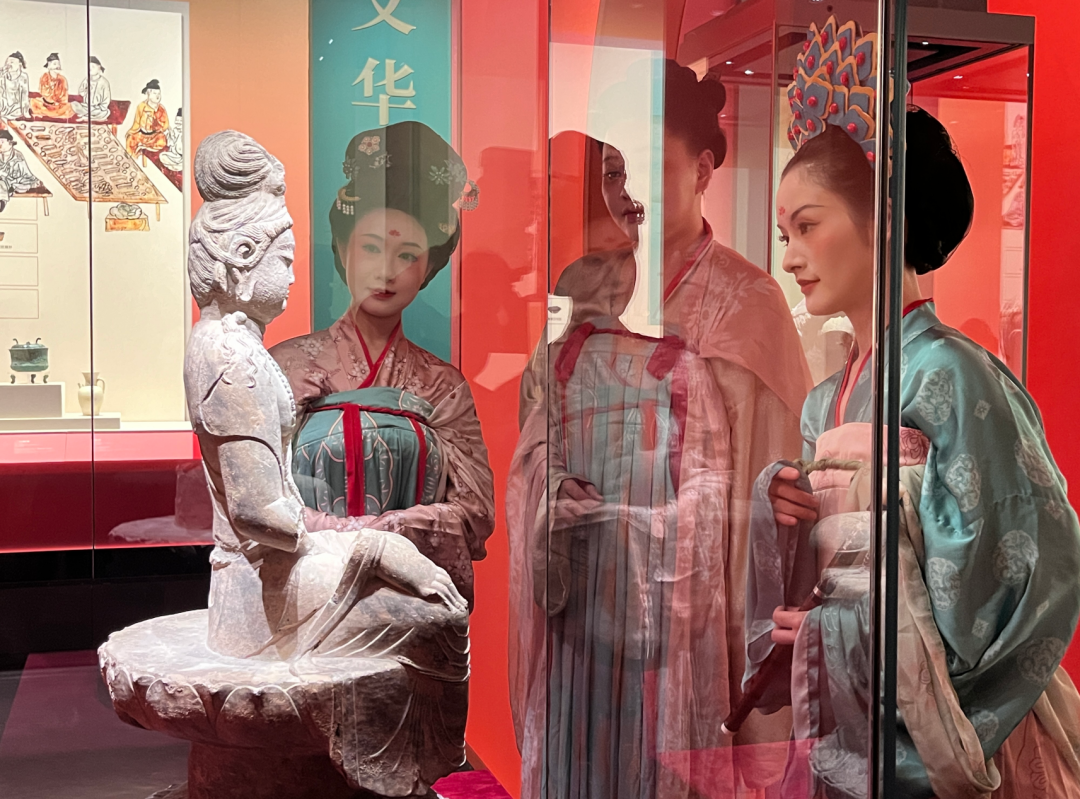
Tang Dynasty poet Du Fu's famous line, "From Ba Gorge through Wu Gorge, I descend to Xiangyang and head towards Luoyang," not only charts the geographical route to Luoyang but also captures the poet's deepest attachment to the city during his eight years of wandering during the An-Shi Rebellion. The Paper reports that the exhibition "Dreaming of Luoyang: The Essence of Cultural Relics from the Tang Dynasty Eastern Capital" is currently open at the Du Fu Thatched Cottage Museum in Chengdu. Through Du Fu's first-person perspective, the exhibition, featuring over a hundred exquisite cultural relics, recounts the Tang Luoyang that Du Fu dreamed of countless times.
The exhibition is guided by the Sichuan Provincial Cultural Relics Bureau and the Chengdu Municipal Bureau of Culture, Radio, Film and Tourism, and co-organized by the Chengdu Du Fu Thatched Cottage Museum, Luoyang Museum, Longmen Grottoes Research Institute, Luoyang Institute of Archaeology, Yanshi Museum, and Xin'an County Museum, and supported by the Chengdu Yongling Museum. The exhibition is divided into four chapters: "Eastern Capital Luoyang", "Prosperity and Peace", "Cultural Splendor", and "Memories of Beijing and Luoyang".

Exhibition site
Du Fu's deep love for Luoyang
"From Ba Gorge through Wu Gorge, we will descend to Xiangyang and head towards Luoyang." These two lines, penned by Du Fu in "Hearing the Government Troops Recover Henan and Hebei," are like a dynamic geographical scroll, vividly capturing the poet's ecstatic longing for home. On the map of Du Fu's life, Luoyang is more than just a geographical coordinate; it is a totem that carries his family memories, cultural identity, and spiritual home.
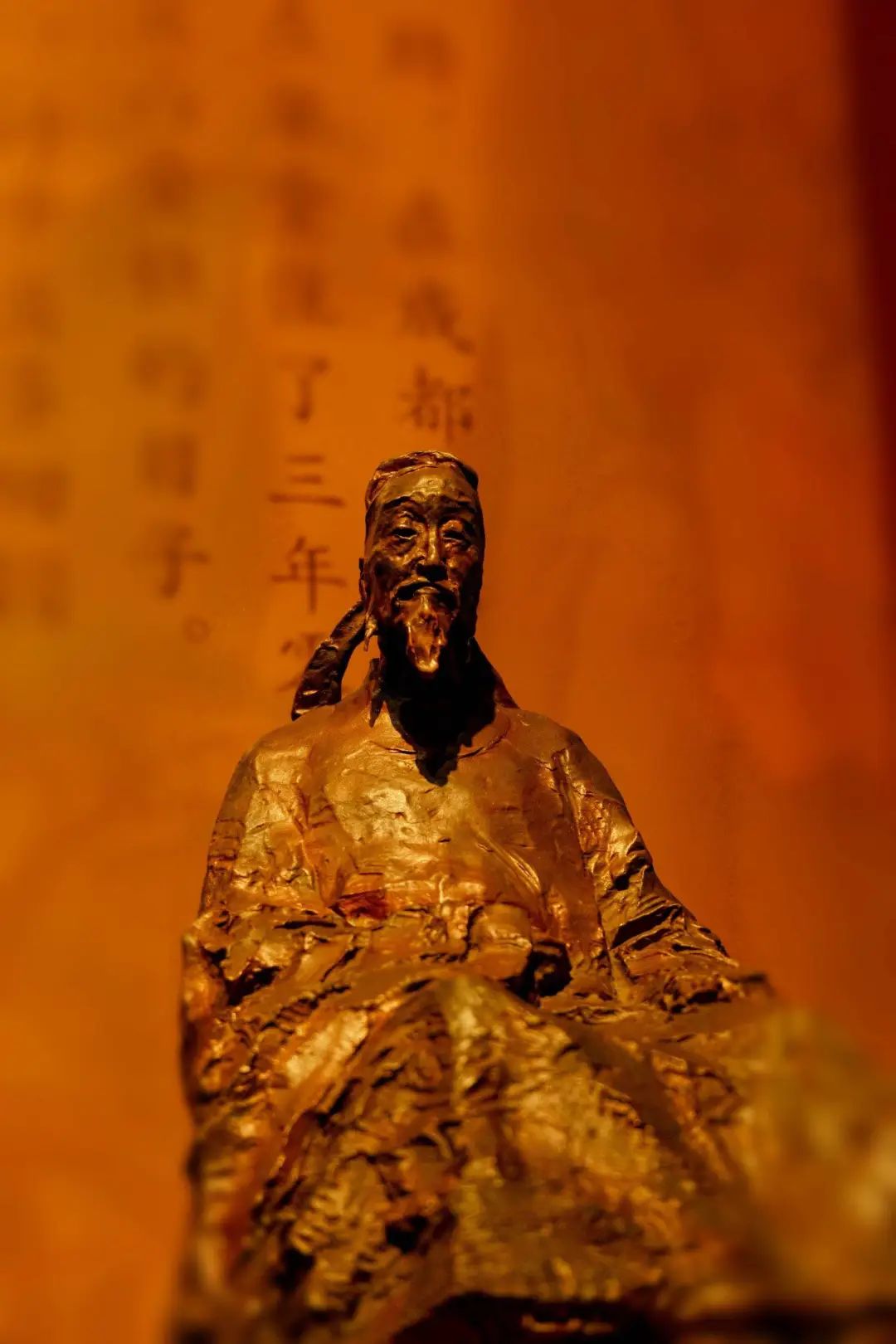
Statue of Du Fu
Here, he socialized and sang with famous scholars such as Zheng Qian, Li Yong, and Li Bai; listened to the exquisite performance and singing of court musician Li Guinian at the Prince of Qi's Mansion; watched the sword and dance skills of Gongsun Da Niang's disciples in Yanshi; and appreciated Wei stele calligraphy and Buddhist sculpture art at the Fengxian Temple in Longmen.
The "Dreaming of Luoyang - Exhibition of Cultural Relics from the Eastern Capital of the Tang Dynasty" presents the "Memories of Beijing and Luoyang" unit, which is divided into two sections: "Interactions and Travels" and "Dance, Music, Poetry and Books". Through exhibits such as calligraphy rubbings and Du Fu's poetic calligraphy, it tells the story of Du Fu's life experiences in Luoyang during his youth.
In the exhibition hall, lotus-patterned bricks from the palace, tiles with the inscription "Jiang Tang Zisong" and bricks with inscriptions from the Hanjia Granary ruins recreate the layout of the capital with numerous palaces and abundant granaries; tri-color Hu figurines, female figurines on horseback, exquisite tea sets and gold and silver wares paint a picture of life along the Silk Road that was accessible and diverse; the statue of Mahasthamaprapta in the Fengxian Temple of the Longmen Grottoes and the head of Guanyin in the Huoding Cave are quiet and solemn; the images of the painted music and dance figurines bring people back to the nights of music and dancing in Luoyang.
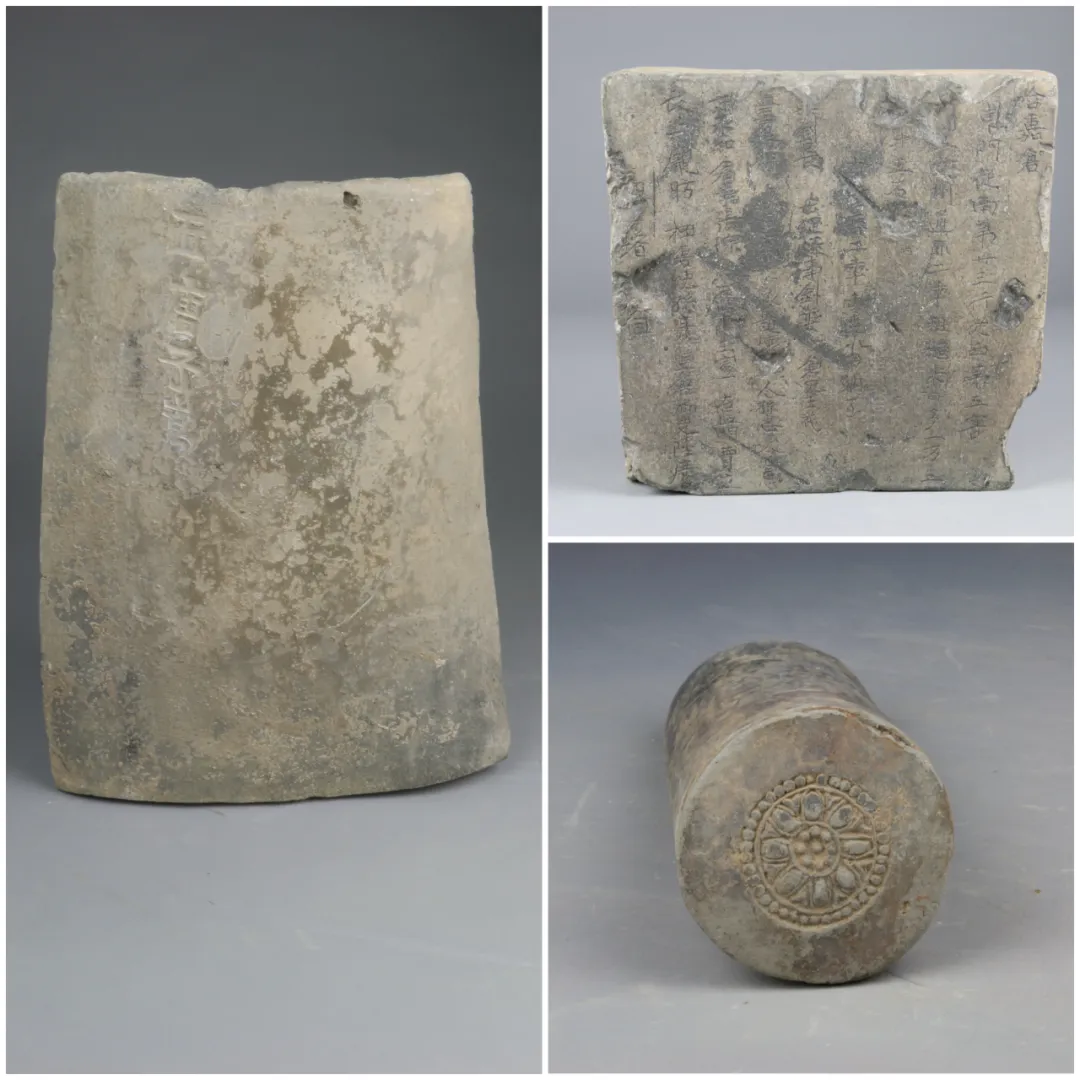
Cultural relics unearthed in Luoyang during the Tang Dynasty on display
These cultural relics are not only the physical memories of the prosperous Eastern Capital, but also reflect Du Fu's delicate observation and deep concern for the times as the greatest realist poet in the Tang Dynasty. From the prosperous scenes to the turbulent times, he faithfully recorded them in poetry.
Du Fu's connection to Luoyang is innate. His 13th-generation ancestor, Du Yu, was a renowned general and scholar during the Western Jin Dynasty, stationed in Luoyang; his grandfather, Du Shenyan, also served as an official there for many years. Whether through his early experiences as a resident or his later spiritual yearning, Luoyang remains an irreplaceable part of Du Fu's emotional world.

Exhibition site
Prosperity and Peace: The Prosperity of the Eastern Capital of the Tang Dynasty
In his poem "Remembering the Past", Du Fu described the scene of the Kaiyuan Period of Prosperity: "I remember the Kaiyuan Period of Prosperity, when even small towns housed tens of thousands of households. The rice was fat and the millet was white, and the public and private granaries were full." Although these poems were written after the Anshi Rebellion, one can still feel Du Fu's fond memories of the prosperous Tang Dynasty.
According to the museum, the "Eastern Capital Luoyang" section of the exhibition recreates the grandeur of Tang Dynasty Luoyang, with its numerous palaces and chessboard-like streets. Exhibits include lotus-patterned bricks and animal-faced bricks unearthed from the palace ruins, as well as tiles inscribed with the inscription "Artisan Tang Zisong." This immersive experience evokes a sense of "Jade Towers and Golden Palaces." Archaeological evidence of "chessboard streets" and "the world's granary" also demonstrates the city's rigorous structure and the smooth flow of its economic lifeline.
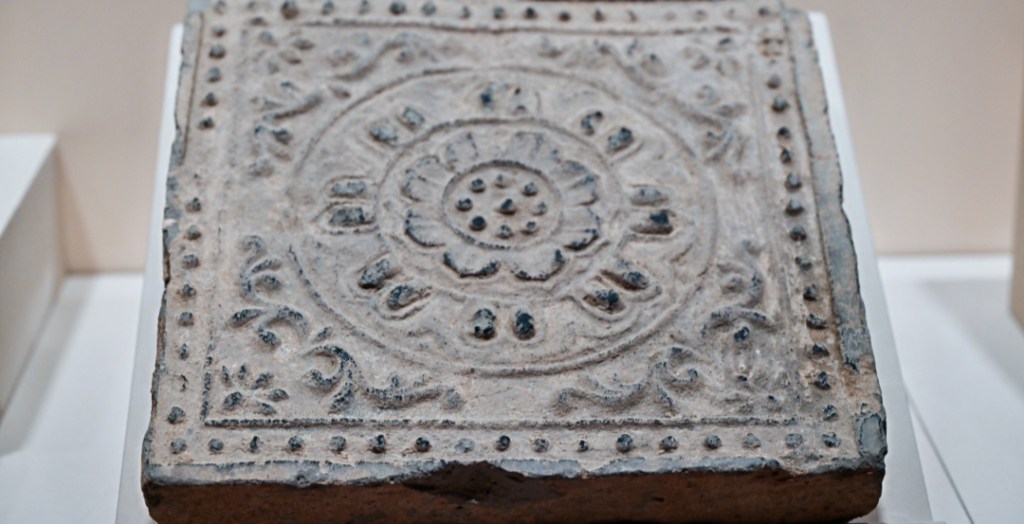
Lotus pattern bricks
The "Prosperity and Peace" section focuses on the diverse and inclusive social life of the Tang Dynasty. Figurines of the Hu people, tri-colored horses, and tri-colored camels depict Sogdian merchants traversing the Silk Road, amidst the sound of camel bells. Of particular note is the tri-colored camel unearthed in 1981 from the tomb of An Pu and his wife at Dongshan in Longmen, Luoyang. Its raised head and neighing figure evokes a magnificent scene of a camel caravan traversing the desert. It is now a designated national first-class cultural relic.
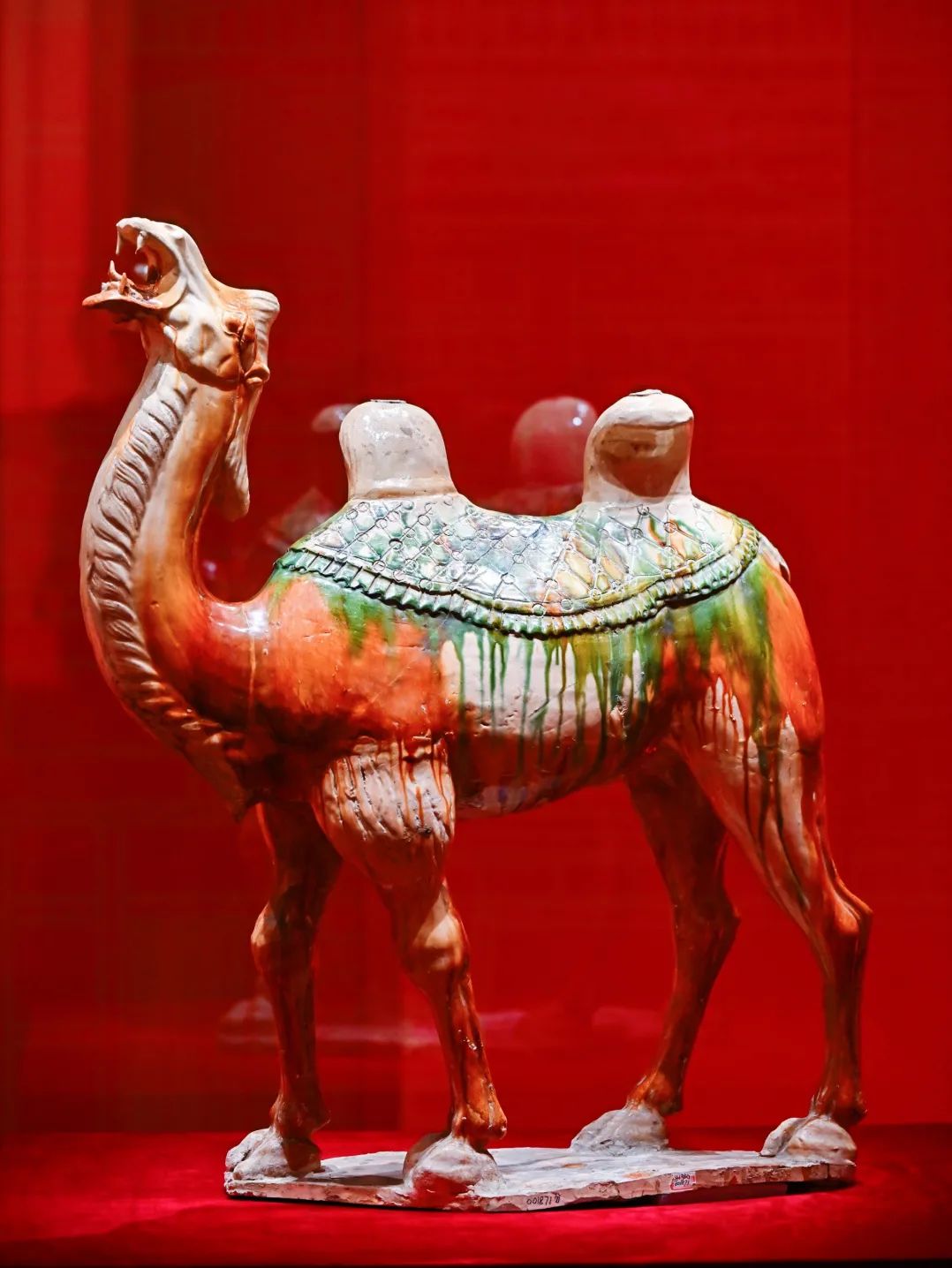
Three-colored camel
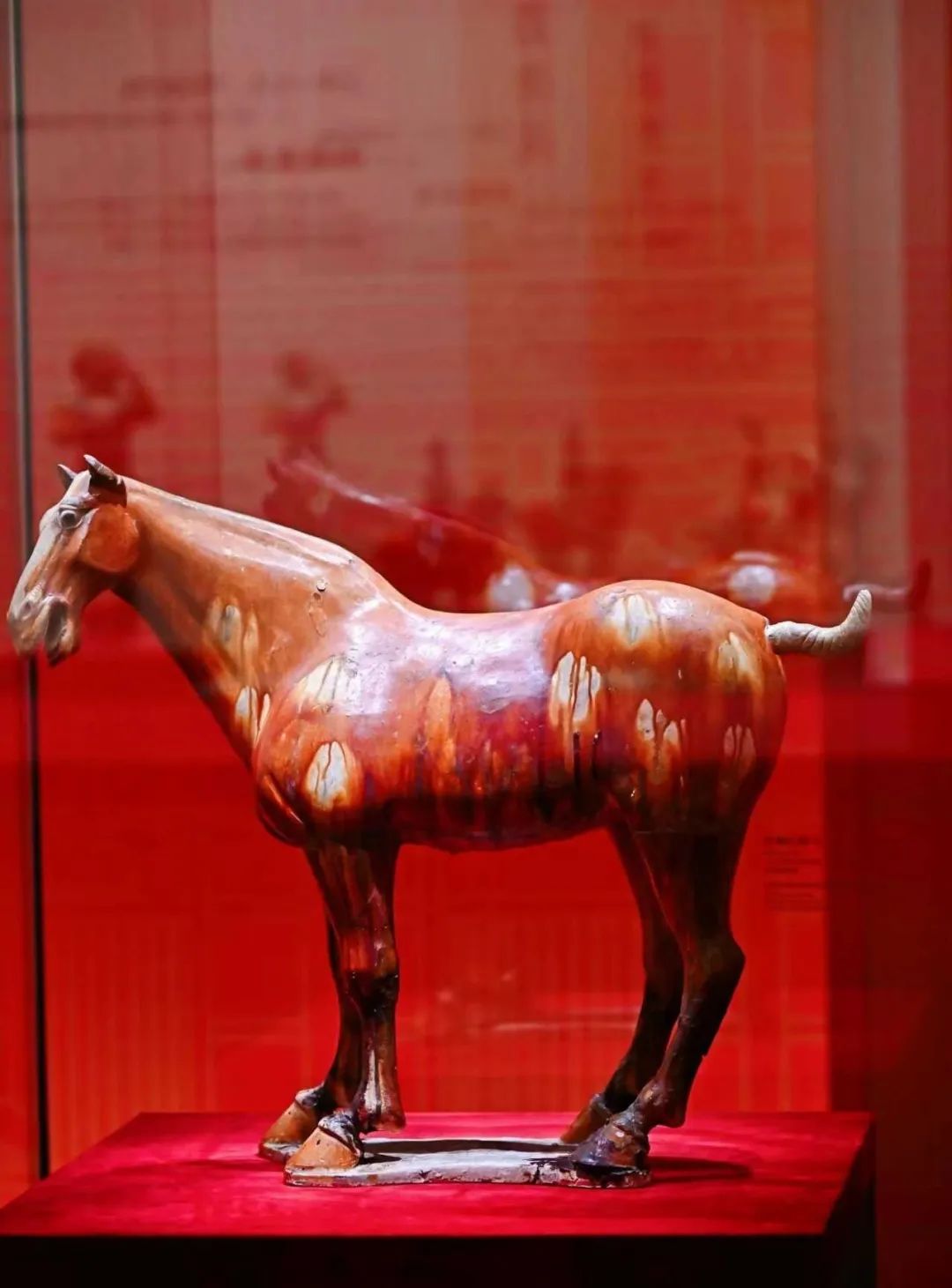
Red glaze white zebra
In contrast, the red-glazed white zebra unearthed from the Tang Dynasty tomb in Guanlin, Luoyang in 1972 has a sturdy body and well-proportioned texture, demonstrating the superb level of Tang Dynasty ceramic craftsmanship.
During the Tang Dynasty, Luoyang, a cosmopolitan city and one of the eastern starting points of the Silk Road, enjoyed a prosperous commercial life. Its three main markets (South Market, North Market, and West Market) were home to numerous merchants. During the reign of Empress Wu Zetian, Luoyang became the national political center, and the imperial court relocated eastward.
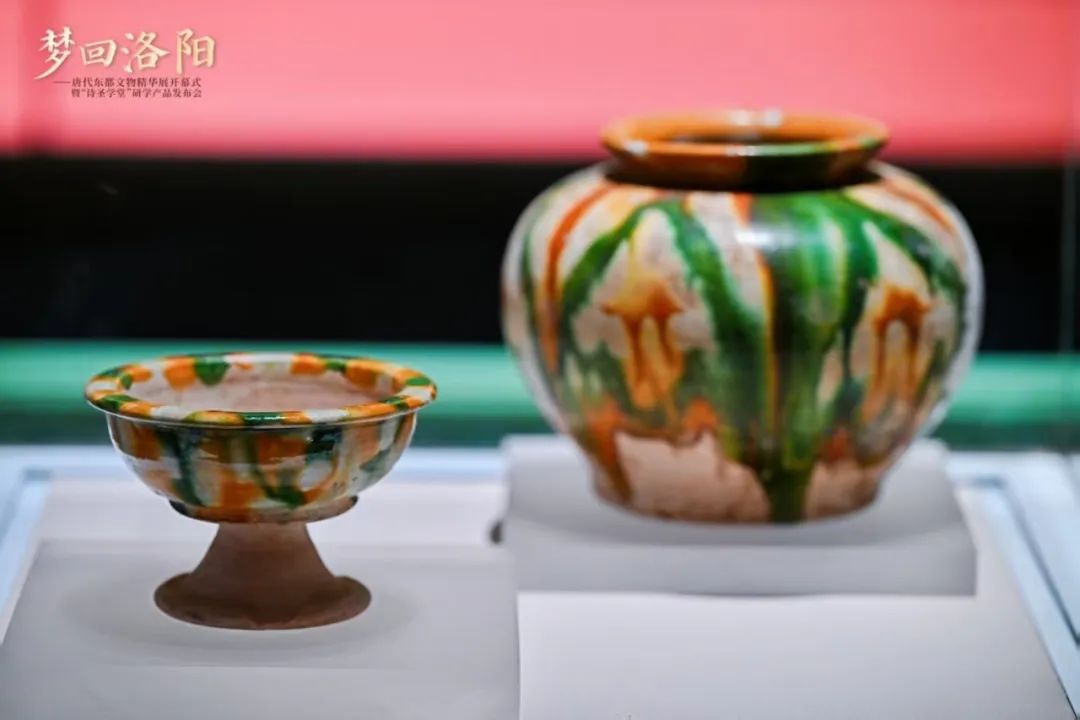
Tang Sancai
Exquisite cultural relics such as tri-color warrior figurines in Hu clothing, painted female horseback rider figurines, and various gold and silver tea sets not only outline the true original appearance of the Tang people's food, clothing, housing and transportation, show the artistic achievements of the Tang Dynasty, but also reflect the openness and tolerance of the society at that time.
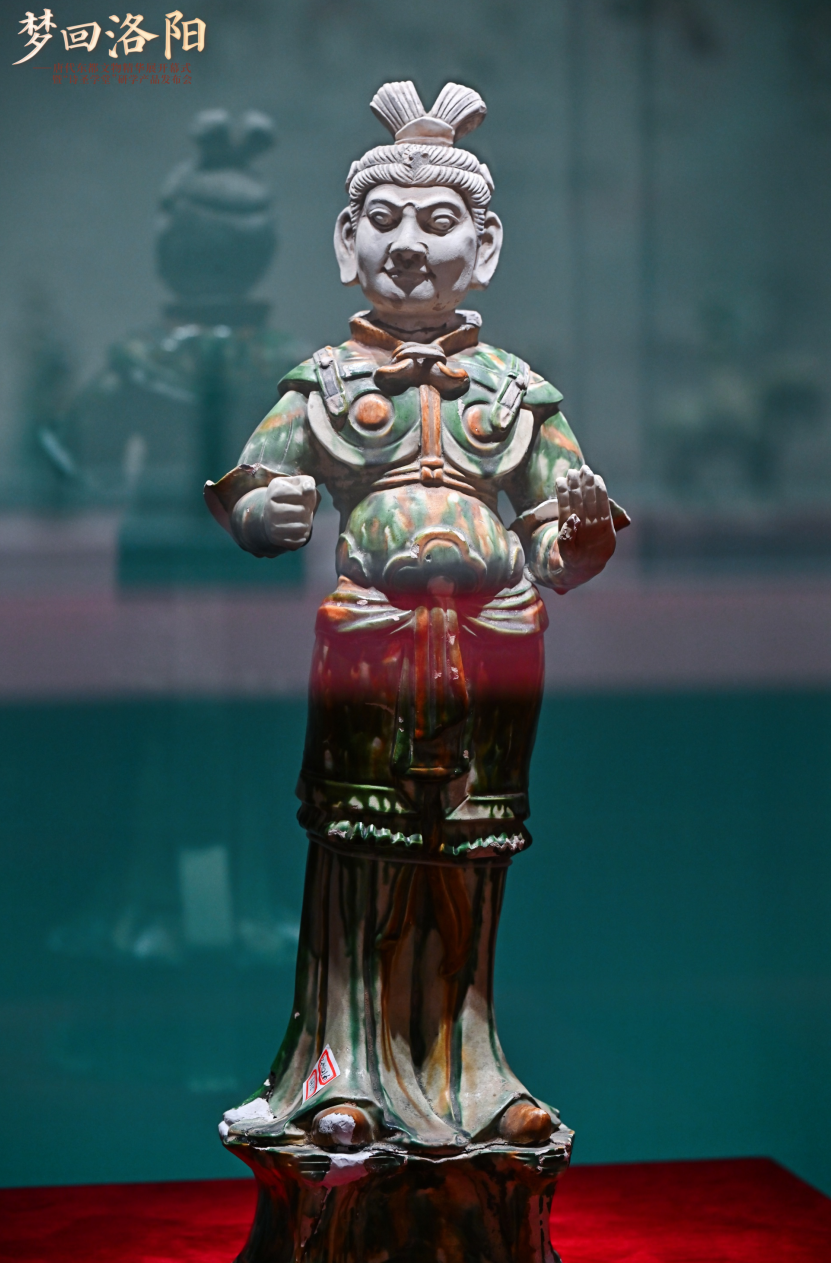
Three-color figurines of warriors in Hu clothing

Three-color figurines
Splendor and Elegance: Presenting the Inclusive Landscape of the Prosperous Tang Dynasty
The "Splendid Culture" section showcases the inclusive spirit of the Tang Dynasty through religious relics and everyday artifacts from Luoyang during the Tang Dynasty. Unearthed from the Longmen Fengxian Temple site, which Du Fu once visited, are artifacts such as a stone statue of a seated Mahasthamaprapta, a stone head of a Bodhisattva, a head of Guanyin Bodhisattva on the left wall of Huoding Cave, and painted pottery figurines of musicians and dancers, as well as tri-colored figurines of women on horseback. These artifacts highlight the localized evolution of Buddhist sculpture.

Stone carved statue of Mahasthamaprapta seated in a relaxed posture
Luoyang was an important religious center during the Tang Dynasty, with the White Horse Temple and Longmen Grottoes becoming sacred Buddhist sites. The exhibition showcases a large number of Tang Dynasty Buddhist statues.

Exhibition site
After the An-Shi Rebellion, Du Fu was forced to leave Luoyang and began a life of wandering. In the summer of 759, Du Fu composed "Summer Day Lament" and "Summer Night Lament," expressing his sorrow for the times and the chaos, lamenting the suffering of his countrymen and refugees. That same year, on his way back to Huazhou from Luoyang, he witnessed the endless suffering brought by the war and the patriotic efforts of the people who braved humiliation and joined the army. This inspired him to compose the immortal epic poems "Three Officials" ("Xin'an Official," "Shihao Official," and "Tongguan Official") and "Three Farewells" ("Newly Married Farewell," "Old Farewell," and "Homeless Farewell").

Exhibition site
After the An-Shi Rebellion, Du Fu, in his later years, died on a boat while returning to Luoyang, never to see his home again. In the winter of 770, Du Fu died on a small boat traveling from Tanzhou to Yueyang at the age of 59. Before his death, Du Fu left a will requesting that he be buried in his ancestral tomb on Shouyang Mountain in Luoyang.
Regarding the exhibition being held at the Du Fu Thatched Cottage Museum, a museum official said: "Du Fu's life spanned the transition period from prosperity to decline during the Tang Dynasty. Luoyang and Chengdu, one the 'Millennium Imperial Capital' and the other the 'Land of Abundance', were important coordinates in his life trajectory."
"Dreaming of Luoyang - Exhibition of Cultural Relics from the Eastern Capital of the Tang Dynasty" will last until November 20. In addition to rich and exquisite exhibits, the Chengdu Du Fu Thatched Cottage Museum will also successively launch themed cultural activities such as "Jincheng Silk Pipes - Tang-style Music Gathering", "Rainbow Skirts and Feathered Clothes - Tang-style Clothing Experience", and "Poet Sage School - Research and Study Products".
(Some of the text and images in this article are compiled by Chengdu Du Fu Thatched Cottage Museum and Wenbo Circle.)
